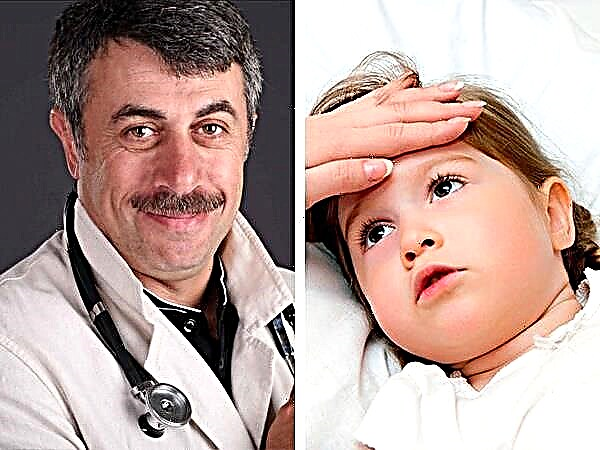Varicocele in children (from the Latin "varices") denotes distension of the veins, namely the expansion of the veins of the testicles and spermatic cord. Yes, unfortunately, vein diseases are common not only for the elderly and not only on the legs. Varicocele is a fairly common disease among children and adolescents aged 14 to 15 years. Let's consider the main causes, clinical picture, diagnosis, methods of treatment of the disease in boys.
Varicocele causes
The genitals of boys are richly supplied with blood and have an extensive venous network. The enlargement of the veins of the aciniform plexus of the spermatic cord is called varicocele. The appearance of the expansion of the lumen of the vein occurs when the function of the venous valve is disturbed, which prevents the reverse flow of blood, as a result of which blood stagnation forms.
The exact cause of the disease is not known, but the main predisposing factors are distinguished:
- congenital pathology of the walls of venous vessels in newborns (weakness of the walls of venous vessels, congenital deformities and anomalies of blood vessels);
- increased intra-abdominal pressure (occurs with chronic constipation or with a strong frequent cough in an infant);
- great physical activity (lifting weights);
- the presence of a tumor compressing the vessels.
The disease is quite common among boys, most often occurs during adolescence. The main percentage of varicocele is left-sided, rarely bilateral and rarely right-sided.
Symptoms and diagnosis of varicocele
The disease most often does not cause any pain, and therefore late diagnosis is widespread and the risk of complications by adulthood is high.
Signs
Clinically, varicocele in boys is manifested by the following symptoms:
- an increase in one half of the scrotum, less often bilateral;
- when probing the scrotum, dense strands can be determined;
- a feeling of heaviness or dull aching pain in the area of the affected side (it is extremely rare, with advanced forms).
Degrees
On the basis of the clinical picture, three degrees of varicocele are distinguished:
- In the first degree, varicose veins are poorly expressed, determined by straining or during physical exertion when examined by a specialist.
- In the second degree, dilated veins can be seen without straining only in an upright position; in a horizontal position, the veins collapse.
- At the third (most severe) degree, half of the scrotum is enlarged. At the same time, the skin of the scrotum is flabby, and the testicle itself is sometimes reduced in size. The veins are greatly enlarged; on palpation, dense cords with nodes are felt.
 As a result of venous stasis in the pelvic area, there is a general violation of the blood supply, which leads to a deterioration in the delivery of oxygen to the testes. With a depletion of testicular nutrition in boys, spermatogenesis is impaired, which is especially important during puberty.
As a result of venous stasis in the pelvic area, there is a general violation of the blood supply, which leads to a deterioration in the delivery of oxygen to the testes. With a depletion of testicular nutrition in boys, spermatogenesis is impaired, which is especially important during puberty.
Dilated testicular veins can also reflect a more formidable disease, such as a tumor that constricts blood vessels, causing venous congestion.
Therefore, given the absence of vivid clinical manifestations, for early detection of the disease, it is recommended not to skip examinations of newborns and take boys to a scheduled visit to a urologist in adolescence.
Diagnostics
In the presence of a pronounced venous network in the scrotum or in case of pain in the testicle, you should immediately consult a specialist!
To make a diagnosis, the urologist examines and palpates (probes) the scrotum. A functional Valsalva test is performed - the patient, taking a deep breath, holds his breath, and the doctor conducts an examination and palpation. Veins are assessed horizontally and vertically.
 If doubts arise during the examination, additional instrumental examination methods may be prescribed. For example, ultrasound of the scrotum with dopplerography. This is an ultrasound method that allows you to assess the blood supply to the organ being examined, which will accurately determine the early signs of the disease.
If doubts arise during the examination, additional instrumental examination methods may be prescribed. For example, ultrasound of the scrotum with dopplerography. This is an ultrasound method that allows you to assess the blood supply to the organ being examined, which will accurately determine the early signs of the disease.
To exclude pathology from other organs that can cause secondary varicocele, ultrasound, computed tomography (CT), magnetic resonance imaging (MRI) of the abdominal cavity and the pelvic cavity are prescribed.
In newborn boys, the diagnosis is predominantly visual.
Varicocele treatment in children
When a varicocele is detected in a child, the tactics of treatment directly depend on the degree of the disease.
With varicocele of the first degree, it is possible to use venoprotectors, wear panties in the form of swimming trunks, and limit physical activity.
All therapy should be performed only as directed by a doctor, do not self-medicate!
 In this case, it is necessary to go for a specialist examination every 6 months. Conservative therapy will not cure varicocele, it only prevents the progression of the disease.
In this case, it is necessary to go for a specialist examination every 6 months. Conservative therapy will not cure varicocele, it only prevents the progression of the disease.
With varicocele of the second and third degree, there is no question of drug therapy. The only treatment is surgical. The operation is carried out as planned. The age at which the operation is performed is decided by the urologist individually in each case. All operations on children are performed under anesthesia in a hospital setting. The main goal is to turn off the modified vein from the system of blood outflow from the testicle.
Surgical treatment methods
There are several methods of surgical treatment:
- Ivanissevich's operation. To access the vein, an incision is made in the iliac region no longer than 5 cm, the dilated vessel is tied up, and the wound is sutured. In the postoperative period, no additional treatment is required, only a limitation of physical activity. The stitches are removed on the 7th day, and the child is discharged home with recovery;
- laparoscopic clipping. Currently, it is one of the most common methods of treating varicocele in pediatric practice. Laparoscopic surgeries are the least traumatic and more cosmetic. Through three small punctures, a camera and instruments are inserted into the abdominal cavity, with the help of which a special clip is applied to the vein. Postoperative wounds are sutured. In the absence of complications in a day, the child can be released home, but within a month, physical activity should be limited;
- Operation Marmara. This microsurgery is considered to be an effective and safe method. Under local anesthesia, a small incision is made, with the help of a microscope, the surgeon finds the damaged veins and ties them up, after which the incision is closed. The operation is the least traumatic with a low risk of complications, but such an operation is possible only with a microscope and a surgeon trained in this technique;
- endovascular surgery. Vein embolization occurs intraluminal. A special flexible catheter is inserted through the femoral vein, which blocks the affected vein. This type of surgery is performed only in adolescents aged 16 - 17, who have a fairly large diameter of the veins.
After any of the methods of surgical treatment, it is necessary to observe a gentle regimen for several weeks, especially to limit the lifting of weights.
Possible complications after surgery
As with any surgery, there is a risk of complications such as:
- dropsy of the testicle - the accumulation of fluid in the membranes of the testicle due to impaired outflow;
- infection of the postoperative wound, while the skin around the wound is bright red, there is swelling of soft tissues, soreness, purulent discharge;
- relapse of varicocele;
- testicular atrophy;
- infertility (an extremely rare complication that occurs when the spermatic cord is injured).
 With a smooth postoperative period, after three months, it is necessary to see a urologist in a planned manner in order to prevent recurrence of the disease.
With a smooth postoperative period, after three months, it is necessary to see a urologist in a planned manner in order to prevent recurrence of the disease.
Conclusion
It is very important to protect the reproductive health of the child, especially during puberty. You should establish a trusting contact with your baby so that he can talk about changes in his genitals. You should also undergo examinations of specialists in a timely manner, even in the absence of complaints, in order to prevent and timely diagnose diseases.



